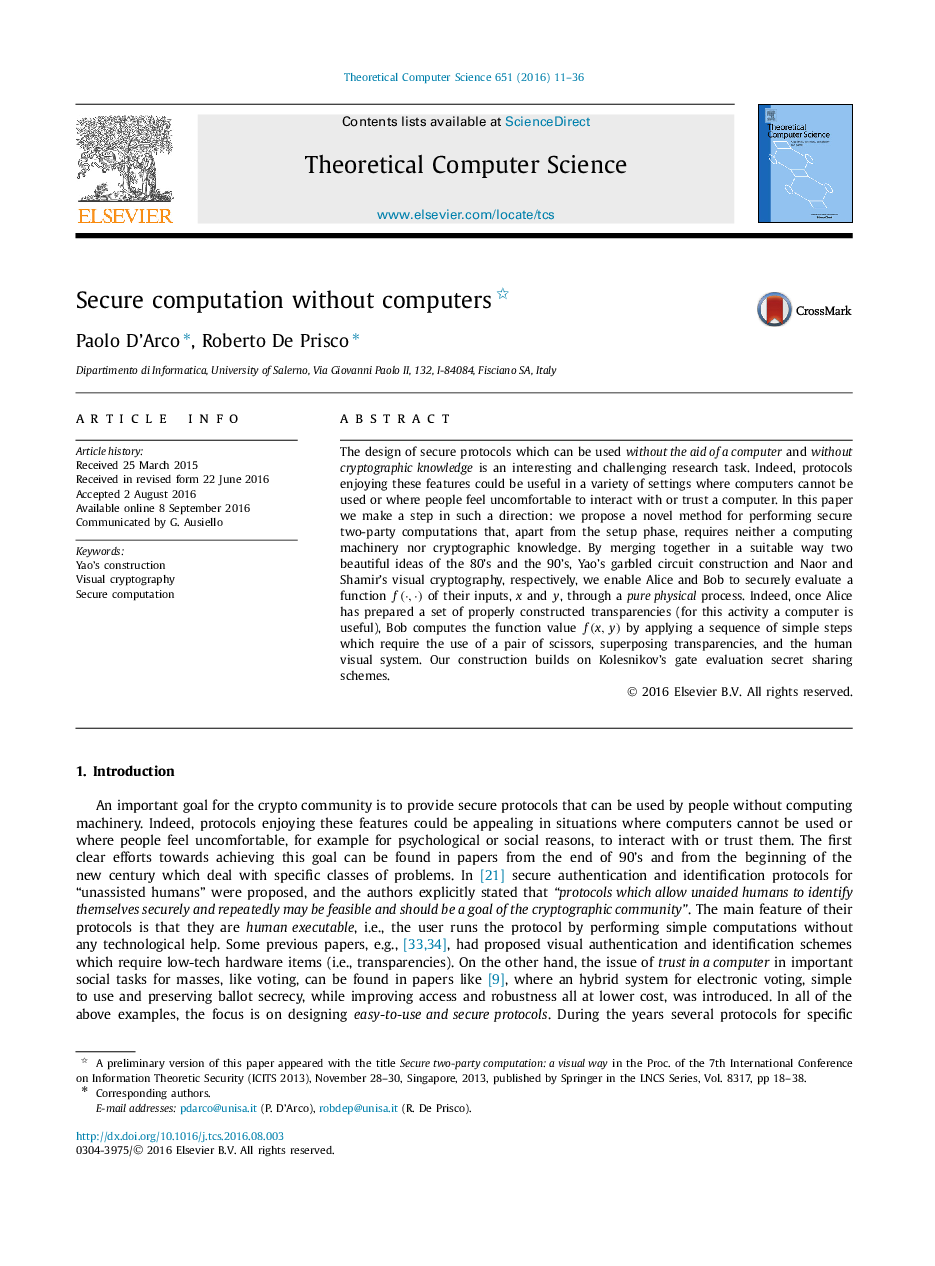| Article ID | Journal | Published Year | Pages | File Type |
|---|---|---|---|---|
| 4952437 | Theoretical Computer Science | 2016 | 26 Pages |
Abstract
The design of secure protocols which can be used without the aid of a computer and without cryptographic knowledge is an interesting and challenging research task. Indeed, protocols enjoying these features could be useful in a variety of settings where computers cannot be used or where people feel uncomfortable to interact with or trust a computer. In this paper we make a step in such a direction: we propose a novel method for performing secure two-party computations that, apart from the setup phase, requires neither a computing machinery nor cryptographic knowledge. By merging together in a suitable way two beautiful ideas of the 80's and the 90's, Yao's garbled circuit construction and Naor and Shamir's visual cryptography, respectively, we enable Alice and Bob to securely evaluate a function f(â
,â
) of their inputs, x and y, through a pure physical process. Indeed, once Alice has prepared a set of properly constructed transparencies (for this activity a computer is useful), Bob computes the function value f(x,y) by applying a sequence of simple steps which require the use of a pair of scissors, superposing transparencies, and the human visual system. Our construction builds on Kolesnikov's gate evaluation secret sharing schemes.
Keywords
Related Topics
Physical Sciences and Engineering
Computer Science
Computational Theory and Mathematics
Authors
Paolo D'Arco, Roberto De Prisco,
